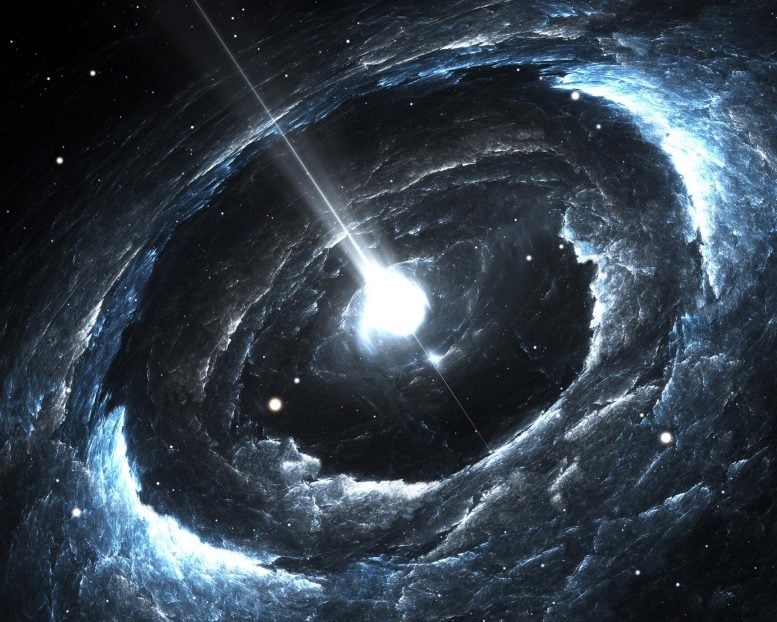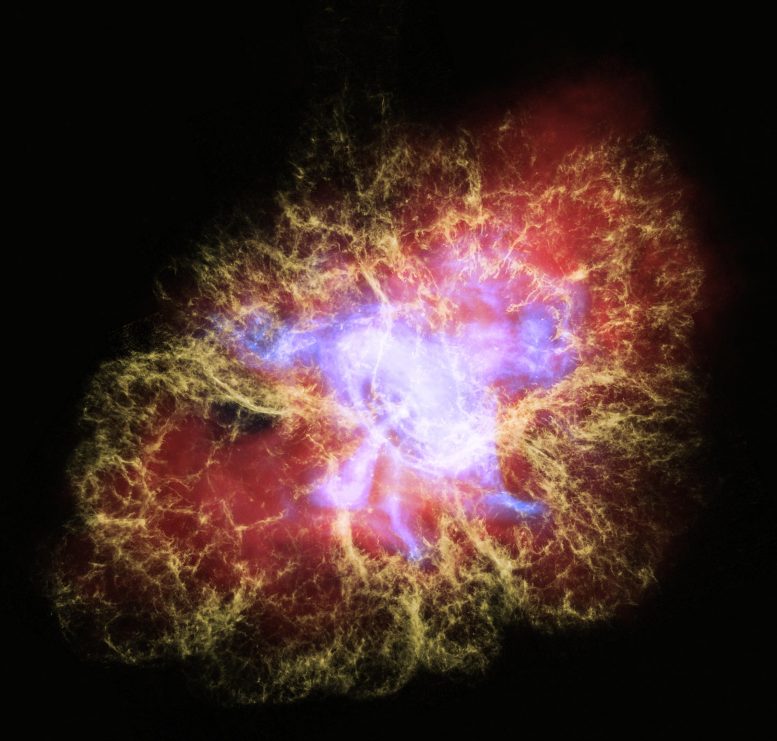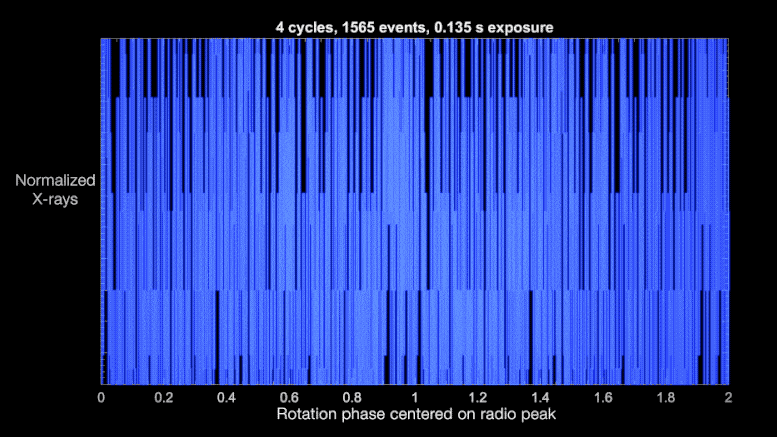
New research findings provide constraints on the mechanisms underlying giant radio pulses and may provide insights into other transient radio phenomena observed throughout the Universe.
X-ray emissions from the Crab Pulsar are more intense during giant radio pulses (GRPs), researchers report. The new findings provide constraints on the mechanisms underlying GRPs and may provide new insights into other transient radio phenomena observed throughout the Universe.
Pulsars, or rapidly spinning neutron stars, emit pulses of electromagnetic radiation from their magnetospheres and are observed from Earth as regular sequences of radio pulses. Most radio pulses from these distant objects are of a consistent intensity. Occasionally, however, sporadic and short-lived bursts from these sources are observed hundreds to thousands of times brighter than normal.
Scientists using data from NASA’s Neutron star Interior Composition Explorer (NICER) telescope on the International Space Station have discovered X-ray surges accompanying radio bursts from the pulsar in the Crab Nebula. The finding shows that these bursts, called giant radio pulses, release far more energy than previously suspected. Credit: NASA’s Goddard Space Flight Center
What causes these unpredictable bursts, also known as GRPs, is unknown. Teruaki Enoto and colleagues observed the Crab Pulsar using both X-ray and radio telescopes and found that X-ray emission during GRPs is slightly brighter than during normal pulses.

This new multiwavelength image of the Crab Nebula combines X-ray light from the Chandra X-ray Observatory (in blue) with visible light from the Hubble Space Telescope (in yellow) and infrared light seen by the Spitzer Space Telescope (in red). This particular combination of light from across the electromagnetic spectrum highlights the nested structure of the pulsar wind nebula. Credit: NASA, ESA, J. DePasquale (STScI), and R. Hurt (Caltech/IPAC)
By comparing the radio and X-ray enhancements, Enoto et al. found that the total emitted energy from GRPs is tens to hundreds of times higher than previously known. According to the authors, the findings also help constrain extragalactic fast radio bursts (FRBs), whose mysterious origins remain unknown.

Between 2017 and 2019, NASA’s Neutron star Interior Composition Explorer (NICER) and radio telescopes in Japan studied the Crab pulsar at the same time. In this visualization, which represents just 13 minutes of NICER observations, millions of X-rays are plotted relative to the pulsar’s rotational phase, which is centered on the strongest radio emission. For clarity, two full rotations are shown. As the pulsar beams sweep across our line of sight, they produce two peaks for each rotation, with the brighter one associated with greater numbers of giant radio pulses. For the first time, NICER data show a slight increase in X-ray emission associated with these events. Credit: NASA’s Goddard Space Flight Center/Enoto et al. 2021
For more on this discovery:
- Weird X-ray Surges Detected in Crab Pulsar’s Radio Bursts by NASA’s NICER
- Mysterious Giant Radio Pulses From Pulsars Are Hundreds of Times More Energetic Than Previously Believed
Reference: “Enhanced x-ray emission coinciding with giant radio pulses from the Crab Pulsar” by Teruaki Enoto, Toshio Terasawa, Shota Kisaka, Chin-Ping Hu, Sebastien Guillot, Natalia Lewandowska, Christian Malacaria, Paul S. Ray, Wynn C.G. Ho, Alice K. Harding, Takashi Okajima, Zaven Arzoumanian, Keith C. Gendreau, Zorawar Wadiasingh, Craig B. Markwardt, Yang Soong, Steve Kenyon, Slavko Bogdanov, Walid A. Majid, Tolga Güver, Gaurava K. Jaisawal, Rick Foster, Yasuhiro Murata, Hiroshi Takeuchi, Kazuhiro Takefuji, Mamoru Sekido, Yoshinori Yonekura, Hiroaki Misawa, Fuminori Tsuchiya, Takahiko Aoki, Munetoshi Tokumaru, Mareki Honma, Osamu Kameya, Tomoaki Oyama, Katsuaki Asano, Shinpei Shibata and Shuta J. Tanaka, 9 April 2021, Science.
DOI: 10.1126/science.abd4659









Commonly pulses with two peaks are seen to be emitted with high intensity when a galaxy passes nere by.
Why is the smaller x-ray pulse at 1.4 rather than. 1.5?